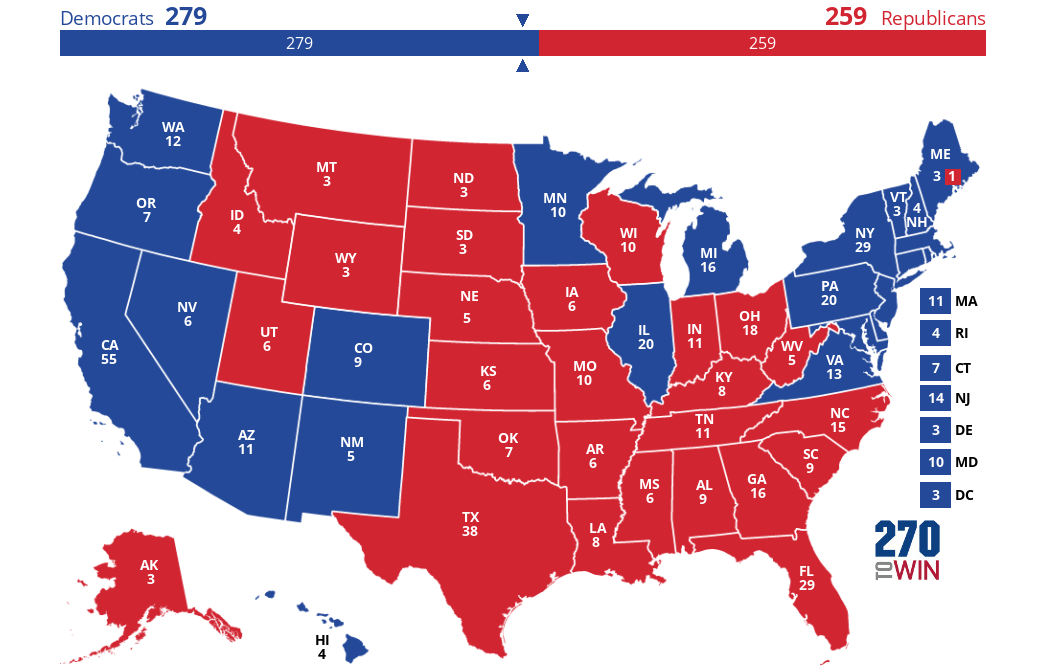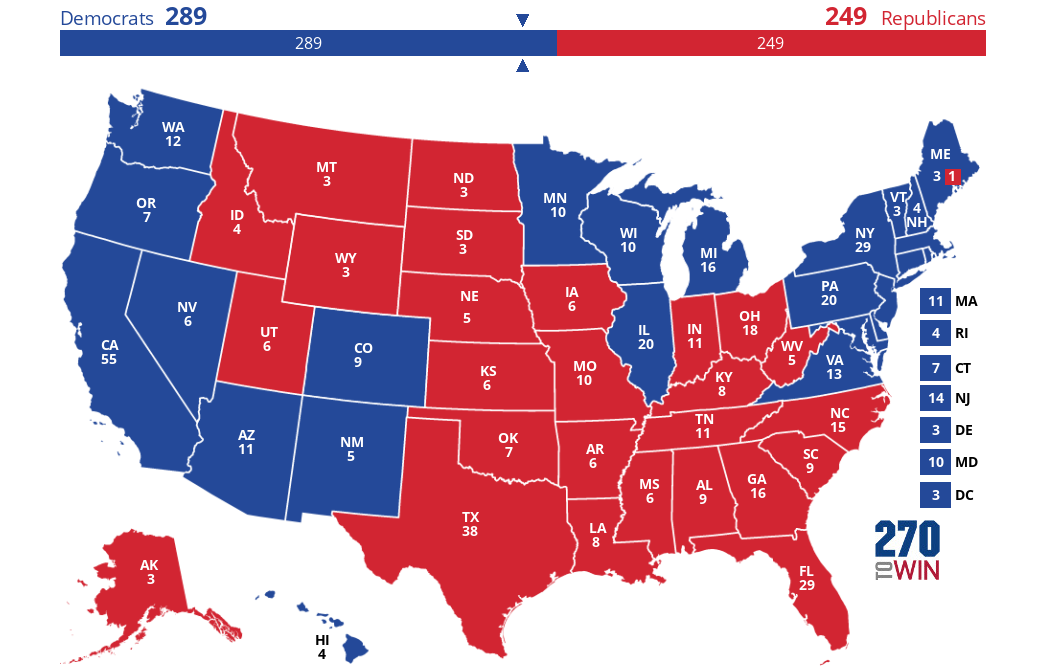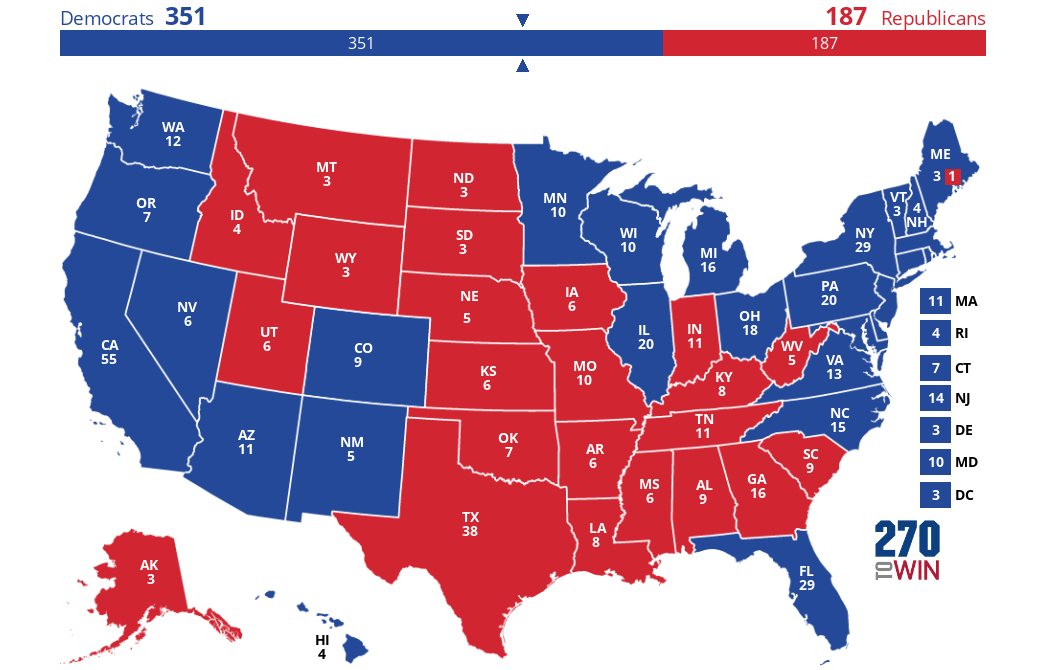The Republican and Democratic conventions are in the rearview mirror as we blow past the two-month mark until the election. Mail voting is already underway in North Carolina and early voting will soon begin in other states as well. It’s crunch-time for the campaigns and there is little time left to shift the polls. The big question now is what the state of the race looks like now that there have been a bevy of post-convention polls as well as polls that take into account the civil unrest and revelations about President Trump’s disparaging comments about the military.
Let’s take a look at the battleground states with an overview of recent polling. As I’ve pointed out many times in the past, any single poll does not show the true picture of the race so we will also look at the FiveThirtyEight average of polls for each state and compare today’s average to August 1 to see how the state might have shifted due to the news of the past month.
Arizona is the first of 11 battleground states. Joe Biden leads there by an average of 4.7 points compared to 3.9 points on August 1.
In Colorado, Joe Biden leads by average of 12.1 points compared to 13.2 points on August 1.
Florida is a more interesting case. The race has narrowed here somewhat in recent weeks and Biden now holds a 1.8-point lead as opposed to his 5.9-point lead from August 1.
In Georgia, Donald Trump leads by a bare 1.5-point margin. This is almost unchanged from his 1.3-point lead on August 1.
Joe Biden leads by 7.5 points in Michigan, which is very close to his 8.0-point lead on August 1.
In Minnesota, scene of the George Floyd killing by police, Biden leads by an average of 6.2 points. On August 1, Biden held a 7.6-point lead.
North Carolina is another squeaker. Joe Biden leads by 1.8 points there, which is almost identical to his 1.9-point lead on August 1.
Ohio is also too close to call. Trump leads there by 0.9 points compared with a 0.5-point lead on August 1.
Joe Biden has a comfortable lead in Pennsylvania. The Democrat leads there by 5.1 points on average, compared with 6.6 points in early August.
Donald Trump holds a slim lead in Texas, the only states where polling has flipped over the past month. Trump currently leads by an average of 0.8 points. On August 1, Biden led by an average of 0.5 points.
In Wisconsin, Biden has opened up a comfortable lead. The Democrat currently holds a 7.5-point advantage compared with 7.0 points on August 1.
The most notable thing about the post-convention polling is how stable the battleground states are. Only in Florida has the polling average changed by more than two points, which puts most fluctuations well within the margin of error.
In 2016, close races in the swing states enabled Donald Trump’s unexpected Electoral College fluke. In the last cycle, state polling showed the battleground states to be mostly in or near the margins of error for the polls. At this point, that is not the case in 2020.
While the trend in Florida is a bright spot for the Trump campaign, the problem is that Joe Biden has other paths to victory in the Electoral College that do not run through the Sunshine State. If we start with the 2016 electoral map, we see that Biden only needs to flip Arizona, Michigan, and Pennsylvania, three states where he has comfortable leads, to win the election by 279-259 electoral votes.

A more likely scenario based on current polling is that Biden takes far more than those three states. Donald Trump will also certainly win Georgia and Texas while Florida, North Carolina, and Ohio remain too close to call. If those states go for Trump, but Biden wins Arizona, Colorado, Michigan, Minnesota, Pennsylvania, and Wisconsin, the Electoral College tally would be 289-249 in favor of Biden. This might represent a good night for Donald Trump.

The worst-case scenario for Republicans would be that all three of the too-close-call battleground states break for Biden. The resulting 351-187 Electoral College score would represent a landslide victory for Biden. The last time that a candidate exceeded 350 electoral votes was in 2008 when Barack Obama defeated John McCain 365-173.

Polls are snapshots and not predictive but based on current polling, if the election was held today, Joe Biden would become the next president of the United States. FiveThirtyEight also has a model that forecasts the winner of the election based on current trends. Currently, that model gives Joe Biden a 74 percent chance of winning.
As I discussed last week, polling shows that Donald Trump’s message on crime and the pandemic is falling flat. Even much trust on the economy, once President Trump’s strong point, is being ceded to Joe Biden. At the same time, the president is on the defense due to leaks about his criticisms of the military.
If he hopes to win the election, the president needs to find a message that resonates beyond his base and can bring moderate and independent voters into his camp. He has precious little time to do so.
Originally published on The Resurgent
No comments:
Post a Comment